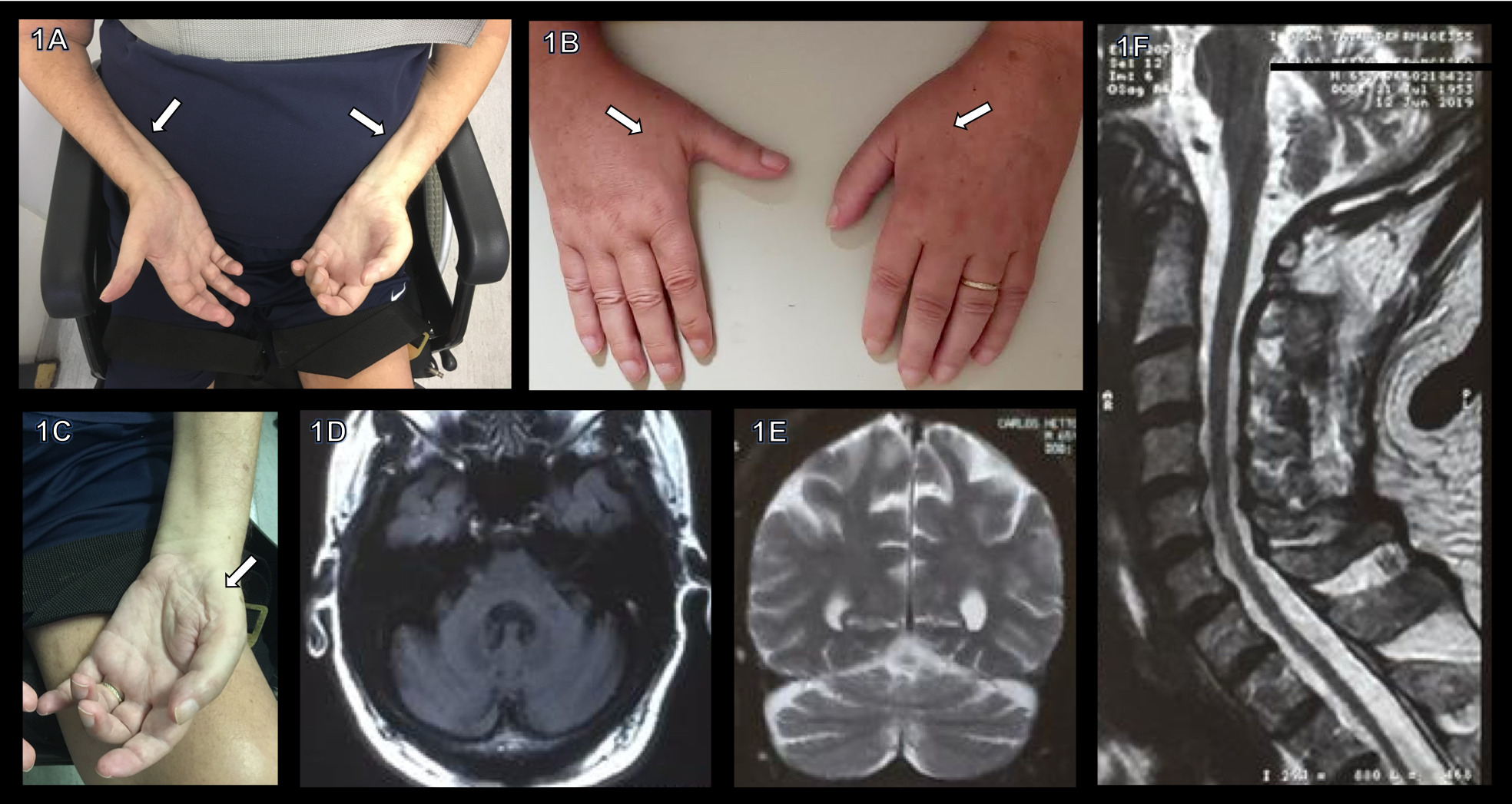Category: Ataxia
Objective: Spinocerebellar ataxia type 3 (SCA3) is associated with a wide spectrum of clinical manifestations, including peripheral neuropathy and amyotrophy, in addition to other motor and non-motor symptoms. Herein we describe a typical case of motor neuron disease (MND) manifested in a patient with ATXN3 gene mutation.
Background: A 66-year-old man presented with an eight-year history of progressive gait imbalance, until he was on wheelchair after 3 years of symptoms onset. At age 65 he noticed paraparesis and amyotrophy that progressed to tetraparesis. His family history was remarkable for gait imbalance with three consecutive generations affected by the maternal side, none with paresis or associated amyotrophy.
Method: On neurological examination, hypermetric saccades, distal global weakness, diffuse fasciculations, and marked atrophy on upper limbs with split hand sing [figure1] were observed. Serum vitamins, serologies and cerebrospinal fluid were unremarkable. He presented diffuse cerebellar atrophy on magnetic resonance imaging of the brain [figure1]. Electroneuromyography demonstrated acute and chronic denervation signs on lumbosacral, thoracic and cervical levels, only chronic denervation signs on bulbar levels, on a diffuse and asymmetric pattern, suggestive of motor neuron compromise. Molecular tests confirmed SCA3 (66 allelic expansion on ATXN3 gene). An informed consent form was obtained.
Results: The diagnosis of SCA3 associated with MND was confirmed. Riluzole was started, as well as rehabilitation and speech therapy.
Conclusion: Besides the cerebellum, SCA3 may present with degeneration in of other segments, such as the anterior horn. Anterior horn degeneration with distal amyotrophy resembling motor neuron disease has been reported in SCA3. Thus, SCA3 should be considered a genetic cause of motor neuron disease, particularly when there is family history of ataxia.
References: 1. Escorcio Bezerra ML, Pedroso JL, Pinheiro DS, et al. Pattern of peripheral nerve involvement in Machado-Joseph disease: neuronopathy or distal axonopathy? A clinical and neurophysiological evaluation. Eur Neurol. 2013;69:129-133. 2. Pedroso JL, de Resende Pinto WB, de Souza PV et al. Anterior horn degeneration in Machado-Joseph disease. J Neurol Sci. 2016;368:290-291. 3. Pinto S, De Carvalho M. Machado-Joseph disease presenting as motor neuron disease, Amyotroph. Lateral Scler. 2008;9:188-191. 4. Tan CF, Yamada M, Toyoshima Y, et al. Selective occurrence of TDP-43-immunoreactive inclusions in the lower motor neurons in Machado-Joseph disease. Acta Neuropathol. 2009;118:553-560. 5. Seidel K, den Dunnen WF, Schultz C, et al. Axonal inclusions in spinocerebellar ataxia type 3. Acta Neuropathol. 2010;120:449-460.
To cite this abstract in AMA style:
C. Jaques, J. Pedroso, A. Rocha, W. Pinto, A. Oliveira, O. Barsottini. Spinocerebellar Ataxia Type 3 Presenting with Motor Neuron Disease [abstract]. Mov Disord. 2020; 35 (suppl 1). https://www.mdsabstracts.org/abstract/spinocerebellar-ataxia-type-3-presenting-with-motor-neuron-disease/. Accessed April 1, 2025.« Back to MDS Virtual Congress 2020
MDS Abstracts - https://www.mdsabstracts.org/abstract/spinocerebellar-ataxia-type-3-presenting-with-motor-neuron-disease/

